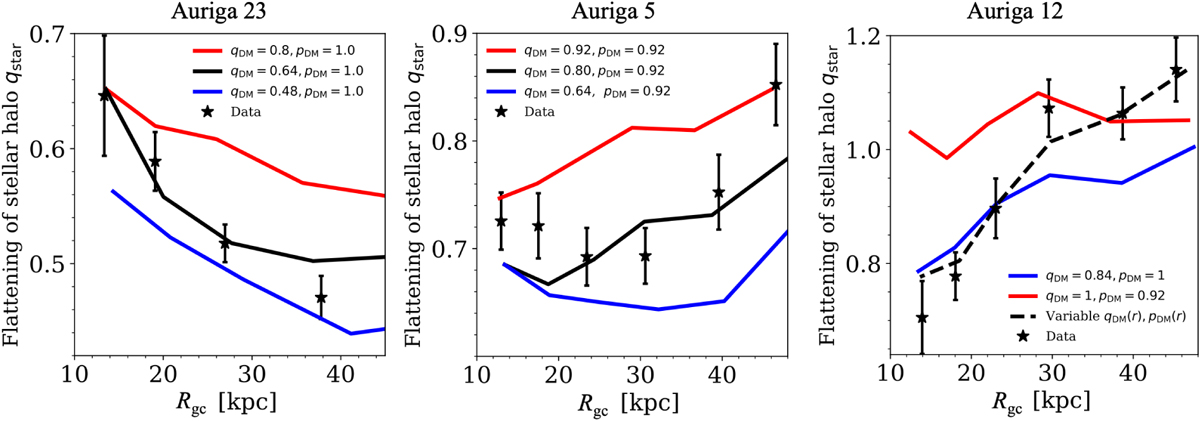Fig. 9

Download original image
Reproduction of stellar halo flattening qstar as a function of radius Rgc for models with different underlying DM halos. The three panels from left to right are Auriga 23, 5, and 12. The DM halo shapes of Auriga 23 show little variation within our data coverage. The qstar(r) is well reproduced by a model with constant pDM and qDM close to the ground truth. Auriga 5 shows mild variation, and Auriga 12 shows relatively strong variation of the DM halo shape, from r ~ 10 kpc to r ~ 50 kpc. Especially for Auriga 12, the stellar-halo flattening, qstar(r), at all regions can hardly be reproduced by a model with constant pDM and qDM; in contrast, it can be reproduced well by a model with pDM(r) and qDM(r), which vary with radius, close to its ground truth. The stellar-halo flattening qstar(r) has strong constraints on the underlying DM shape.
Current usage metrics show cumulative count of Article Views (full-text article views including HTML views, PDF and ePub downloads, according to the available data) and Abstracts Views on Vision4Press platform.
Data correspond to usage on the plateform after 2015. The current usage metrics is available 48-96 hours after online publication and is updated daily on week days.
Initial download of the metrics may take a while.


